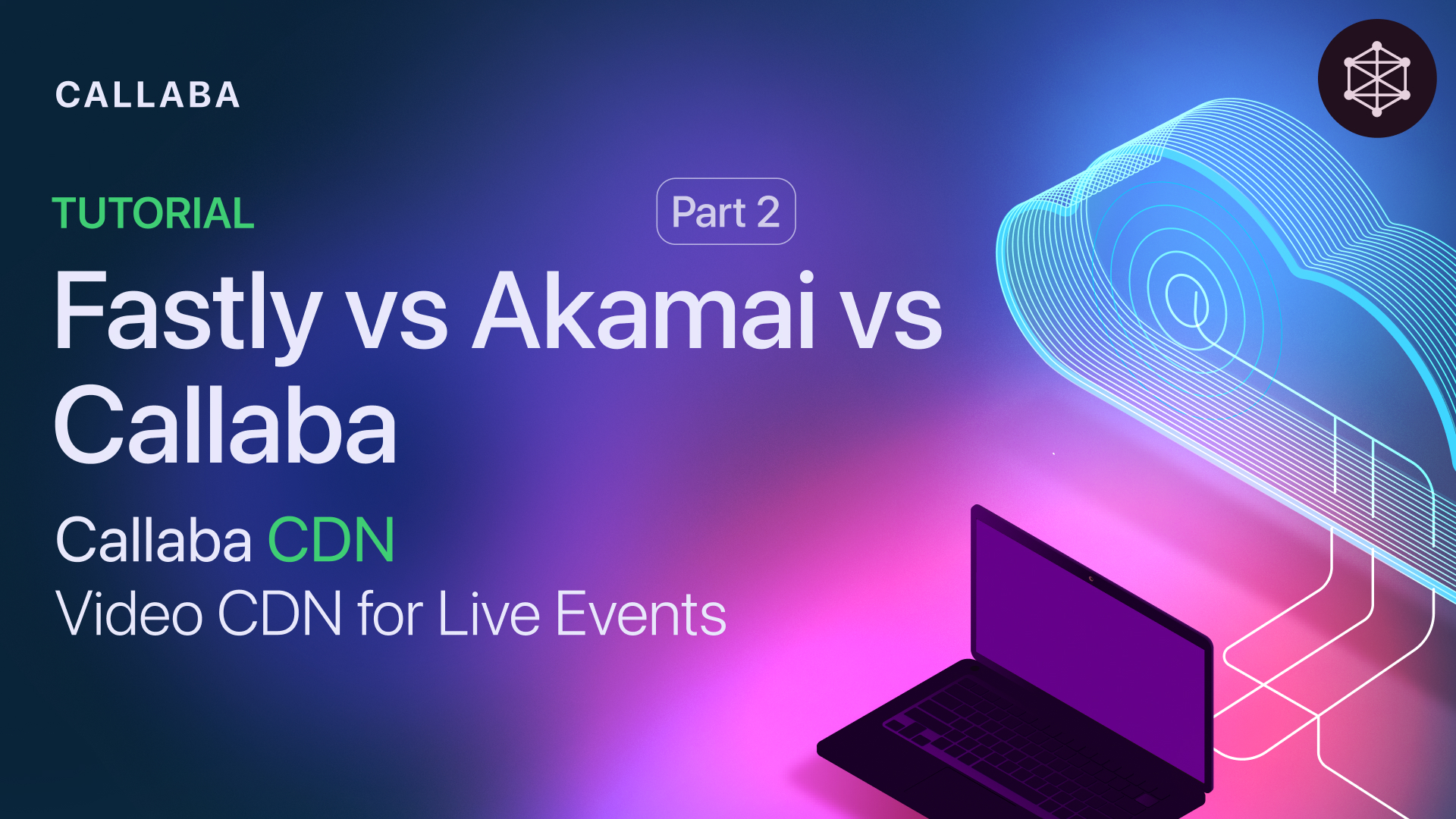How do CDNs work? Explained for streaming and live video
If you’re asking “how do CDNs work?”, you’re in the right place. A content delivery network (CDN) is a global mesh of servers that brings your video closer to viewers. It cuts latency, reduces buffering, and keeps streams stable when audiences spike.
What is a CDN (for video)?
A CDN is a network of edge servers distributed across the world. Instead of every viewer pulling video from a single origin, the CDN serves it from the nearest edge. For video on demand (VOD), edges cache files. For live, edges fetch short media segments generated in real time.
Why CDNs matter for streaming
- Lower latency: physical proximity reduces round-trip time and startup delay.
- Smoother playback: fewer rebuffer events and consistent bitrate adaptation.
- Scale: thousands or millions of concurrent viewers without melting your origin.
- Resilience: automatic failover and traffic steering if a location has issues.
- Cost control: high cache hit ratios reduce expensive origin egress.
How a CDN request flows
- DNS & routing: the viewer’s player requests your video URL; DNS and the CDN route the request to the nearest healthy edge (often using anycast + health checks).
- Edge decision: the edge checks its cache. For VOD, it may already have the file. For live, it checks if the current segment window is cached.
- Cache miss: if needed, the edge fetches from the origin (or a mid-tier/origin shield) and stores it temporarily.
- Delivery: the edge serves segments to the player over HTTP/2 or HTTP/3 (QUIC) and keeps connections efficient.
Caching basics (the knobs that matter)
- TTL (time to live): how long the edge keeps content. VOD can use longer TTLs. Live segments use short TTLs (seconds), aligned with segment duration.
- Cache key: which parts of the URL define a “unique” object (path, query). Keep keys stable to improve hit ratio.
- Origin shielding: a single mid-tier protects your origin from thundering herds.
- Purge & invalidation: force refresh when you update content, switch encodes, or rotate manifests.
- Compression: manifests (.m3u8/.mpd) compress well; video segments don’t. Enable compression for text assets.
Live streaming specifics
Most live streams use HTTP-based protocols such as HLS or DASH, which break your stream into small segments (e.g., 2–6 seconds) plus manifests that list the latest segments. Here’s how to tune for live:
- Segment duration: shorter segments reduce glass-to-glass latency but increase request overhead.
- ABR ladders: include multiple bitrates/resolutions so players can adapt to viewer bandwidth.
- LL-HLS / low latency modes: partial segments and chunked transfer reduce latency further; ensure your CDN supports it end-to-end.
- Manifest caching: set tiny TTLs (or revalidate) to avoid stale playlists, while segments can be cached for their full life.
- Pre-warm: for large events, pre-fetch the first segments to popular edges to avoid a cold start.
Security and access control
- Signed URLs / tokens: restrict who can watch and for how long.
- Geo/IP controls: comply with licensing and regional rights.
- HTTPS everywhere: protect viewers and avoid mixed-content errors.
- DDoS mitigation: the CDN shields your origin with rate limits and scrubbing.
Cost and performance tips
- Maximize cache hits: stable URLs, consistent cache keys, origin shield.
- Right-size ABR: don’t overproduce rarely used bitrates.
- Efficient segments: align GOP to segment boundaries; avoid drift.
- Monitor QoE: track start-up time, rebuffer ratio, and bitrate downshifts—not just bandwidth.
How Callaba uses CDNs for scalable live streams
Callaba integrates cleanly with leading CDNs to deliver stable, low-latency streams at scale. Typical setup:
- Origin: Callaba packages your stream into HLS/DASH with tuned segment durations and aligned GOPs.
- CDN attach: connect your preferred provider (Akamai, CloudFront, Fastly, or your existing CDN). We support origin shielding and cache-aware paths.
- Access control: tokenized URLs and per-viewer rules to protect premium content and pay-per-view.
- Global scale: multi-region origins and CDN failover keep events online during traffic spikes.
- Monitoring: real-time health for origins and manifests, plus analytics to watch QoE and cache hit ratios.
Result: quick start-up, smooth playback, and predictable costs—even when your audience grows 10× in minutes.
FAQ
Do I need a CDN for a small live event?
It depends on audience size and geography. If viewers are global or you expect spikes, a CDN is the safest choice.
What’s the difference between a CDN and a streaming server?
A streaming server (your origin) creates and packages the video; the CDN distributes it worldwide and absorbs the scale.
Is a multi-CDN setup worth it?
For mission-critical events, yes. Multi-CDN with health-based steering improves resilience and regional performance.
How do CDNs handle low-latency HLS?
They deliver partial segments via chunked transfer and keep manifests fresh with very short TTLs. Your origin and CDN must both support it.
How does DRM fit in?
DRM encrypts the content and handles license delivery. The CDN still caches and serves segments; players decrypt with valid licenses.
Next steps
Want a ready-to-run live workflow? Connect Callaba as your origin, attach your CDN, and go live with confident scale. Our team can help you choose segment sizes, ABR ladders, and cache policies tailored to your event.


![Low-Latency Streaming: Complete Guide [2025 Update]](https://api.callabacloud.com/upload/1755639526157-facebook-cover-455-jpg.jpg)
